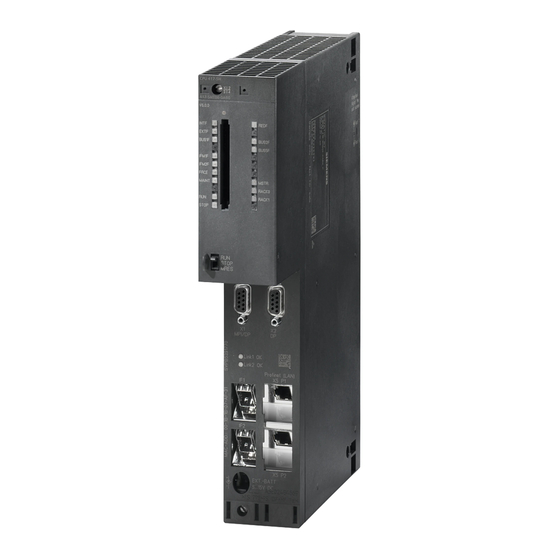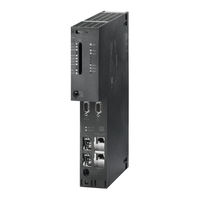
Siemens SIMATIC S7-400H Manuals
Manuals and User Guides for Siemens SIMATIC S7-400H. We have 5 Siemens SIMATIC S7-400H manuals available for free PDF download: System Manual, Manual
Siemens SIMATIC S7-400H Manual (337 pages)
Automation System, Fault-tolerant Systems
Brand: Siemens
|
Category: Control Unit
|
Size: 1.25 MB
Table of Contents
-
Warning2
-
-
-
Requirements36
-
RAM Card59
-
FLASH Card59
-
S7-400H61
-
-
-
Declaration90
-
Memory Reset94
-
Reaction Time102
-
Time Response102
-
-
-
Load Memory114
-
Working Memory114
-
Time Monitoring116
-
-
-
Addressing132
-
-
Example of STL169
-
Ob 122170
-
-
-
Profibus176
-
Optical Network176
-
Programming179
-
Work Area192
-
OPC Server196
Advertisement
Siemens SIMATIC S7-400H System Manual (504 pages)
Fault-tolerant systems
Brand: Siemens
|
Category: Control Systems
|
Size: 5.03 MB
Table of Contents
-
Preface19
-
Requirements41
-
Mode Switch60
-
Profibus Dp87
-
Profinet95
-
Introduction95
-
Shared Device103
-
Media Redundancy104
-
Consistent Data111
-
Memory Concept117
-
Introduction121
-
STOP Mode131
-
STARTUP Mode132
-
RUN Mode133
-
HOLD Mode135
-
Self-Test137
-
Link-Up Sequence147
-
Update Sequence149
-
Time Monitoring155
-
Time Response158
-
Introduction169
-
Communication213
-
PG Communication214
-
OP Communication215
-
S7 Communication215
-
S7 Routing217
-
Data Set Routing224
-
Usable Networks235
Siemens SIMATIC S7-400H System Manual (376 pages)
Fault-tolerant Systems
Brand: Siemens
|
Category: Controller
|
Size: 3.76 MB
Table of Contents
-
1 Preface
15 -
-
-
-
-
-
-
Introduction80
-
Self-Test89
-
-
-
Update Sequence101
-
Time Monitoring106
-
-
Introduction119
-
-
-
11 Communication
157-
Usable Networks161
-
-
Advertisement
Siemens SIMATIC S7-400H Manual (210 pages)
Fault-Tolerant Systems
Brand: Siemens
|
Category: Controller
|
Size: 0.66 MB
Table of Contents
-
-
-
Profibus92
-
-
-
Interface Module124
-
Siemens SIMATIC S7-400H Manual (5 pages)
Fault-tolerant Systems
Brand: Siemens
|
Category: Industrial Equipment
|
Size: 0.06 MB
Table of Contents
Advertisement




